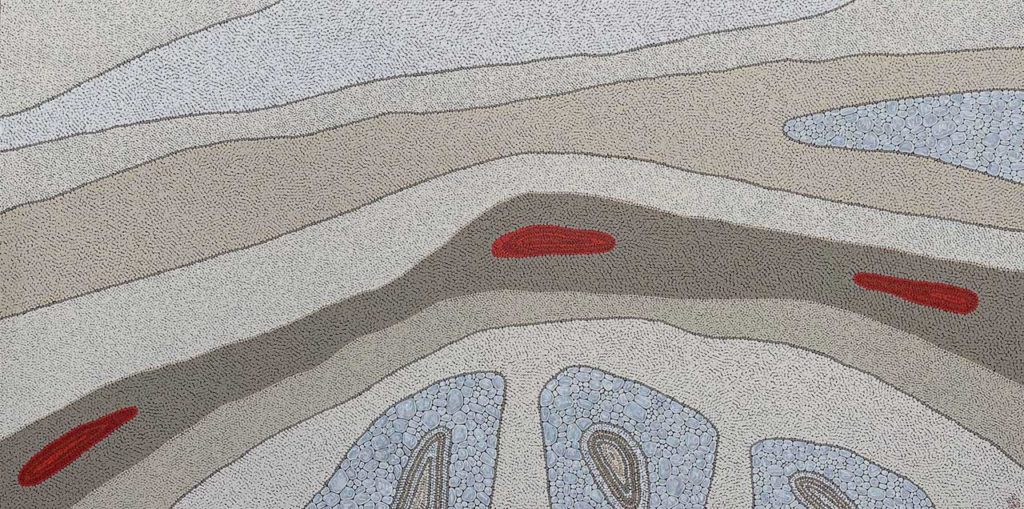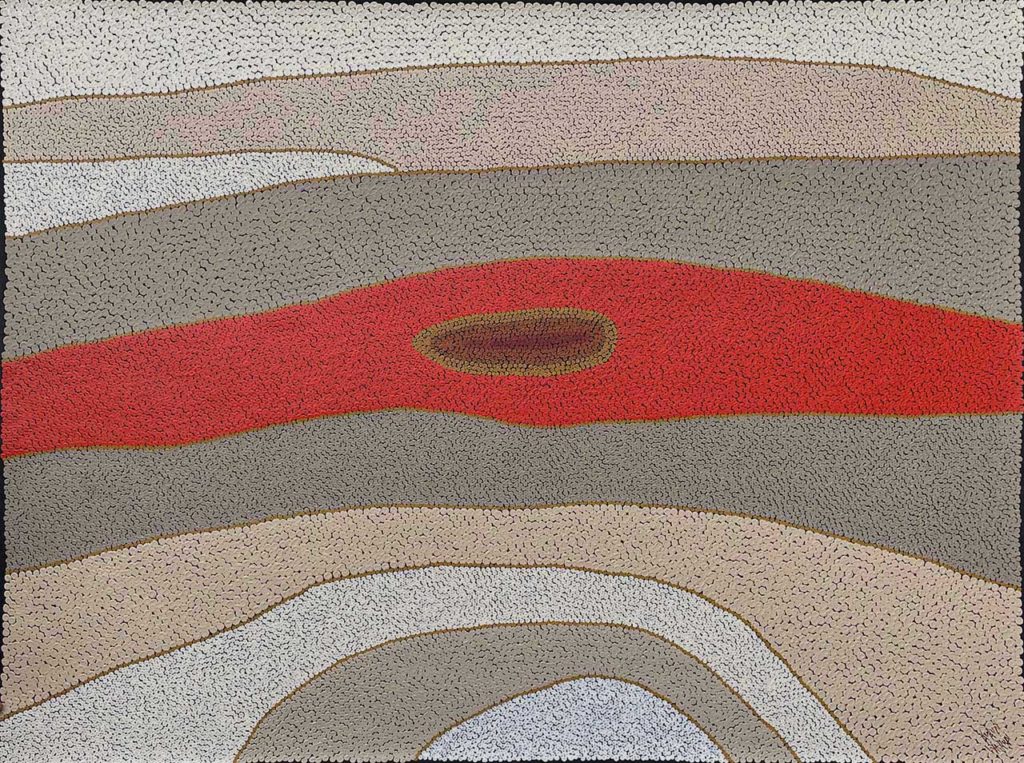Kurun Warun Exhibition Walk Through
David Wroth from Japingka Gallery talks about some of the works from the new Kurun Warun exhibition.
It's a great pleasure to have Kurun Warun presenting his second solo exhibition at Japingka Gallery. His large paintings feel like drifting landscapes' put together in soft tonal colours. They feel very much like the open country around riverbeds, showing how the country twists and flows but in quite a gentle way.

The largest painting in the exhibition is a combination of those extraordinarily soft sand colours appearing like banks of sand along the riverbed. A number of Kurun's paintings represent dry riverbeds and camps where people have used the riverbed as a safe place to camp in an open clearing. This is the largest painting in the show, nearly 2.4 metres, a substantial painting. There are a number of smaller representations on that same theme of the riverbed and campsite.

The other significant style in the exhibition from Kurun Warun is around the idea of Yidarki or didgeridoo. These paintings are quite different to the riverbed paintings. The riverbed paintings are very sinewy and open. These Yidarki paintings have markings going right across them. In some ways there is the suggestion of body markings. Kurun's paintings are distinct because even as landscapes, they always bring you back to the Aboriginal presence in the landscape. This design has repetitive linear structures that move across the canvas. He has the shape of the didgeridoo, coming up out of the ground against the shape of the body markings. These are the lines that spread across the canvas that integrate the design and incorporate all the elements. It reminds us that Kurun is also an accomplished musician and didgeridoo player. This painting is linking several of his artistic interests together. It is an idea of music and wider Aboriginal culture coming straight out of the earth. The whole structure of the painting is covered by Aboriginal markings. It's just a complete image of the themes that Kurun uses in his artwork.

This is a smaller painting by Kurun of a dry riverbed. At the heart of it, we have a cluster of stones, river stones that are painted in red. In between the spaces are more bands of small stones and sand. Kurun builds up a layered image of a riverbed from the larger river rocks through to the centre which is the sand. It's almost like a filtering process, so the whole river area is filtered by the water. The heavy markings in the middle are represented in red, then it fuses out through olive green and then deepest beige colour then out to cream and white. Kurun is using the riverbed as a geological structure, but he's also using it as a cultural statement. It reads as an abstract Indigenous painting. At the same time it could be just an accurate look at the strata inside a riverbed.

Kurun's original family area is in the Western Lakes District of Victoria, and this area is proving to be a haven for amazing archeological finds that show the early lifestyle of traditional Indigenous people in that part of the country. Now there are eel farms and fish traps being found through the lakes and creeks around this area. It is interesting that one of Kurun's images represents the stones and the creek bed, the way that eels would go upstream to spawn. They could find their way upstream by using rocks as levers, by latching onto the small rocks and edging their way against the current back upstream. This painting has a really bold arching design right through the middle in black and white, and then the surrounding red areas of the country. It is significant as a story about eels. This is also a story about how Aboriginal people manage the land and manage the resources and have historically done so over millennia. We are only just acknowledging the degree to which Aboriginal people managed to care for and harvest resources from the land.
This is a wonderful exhibition and we are so pleased to have these works in the gallery.
